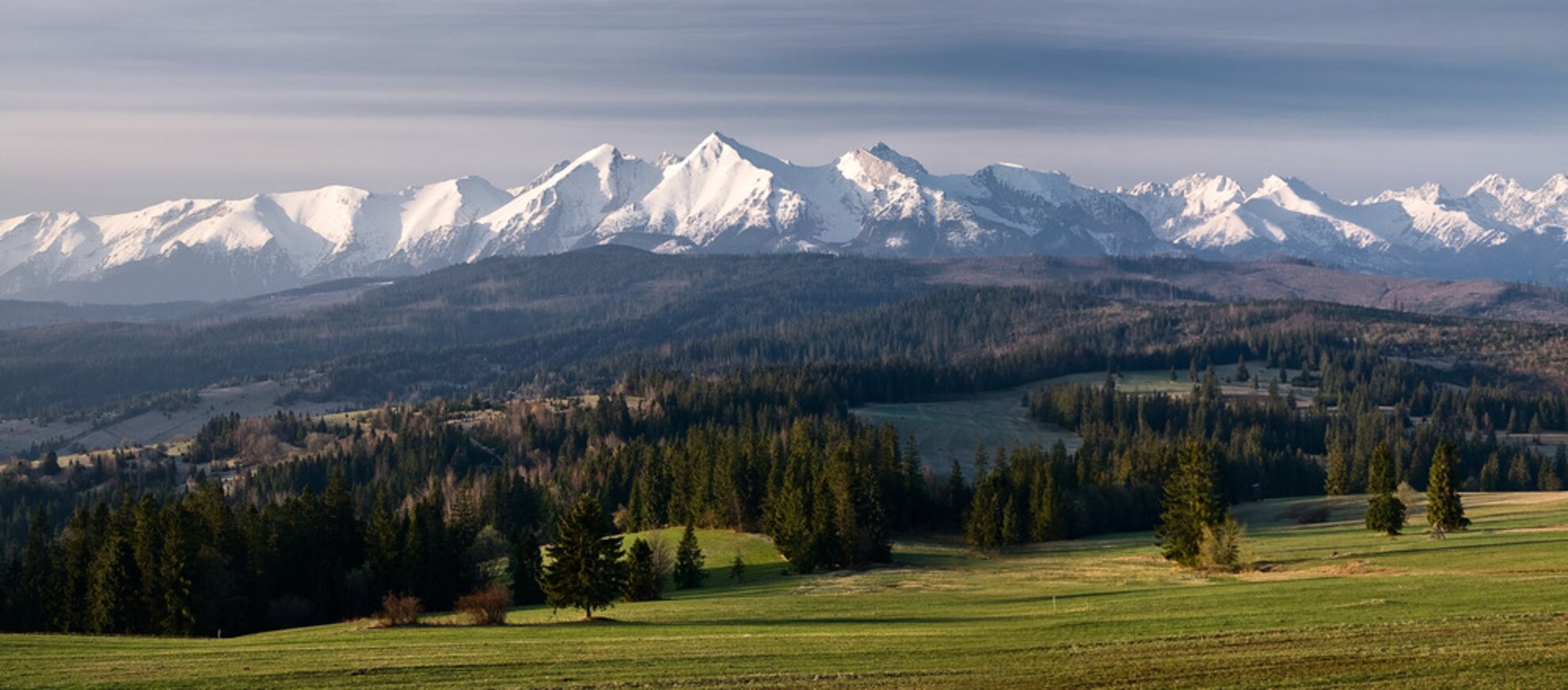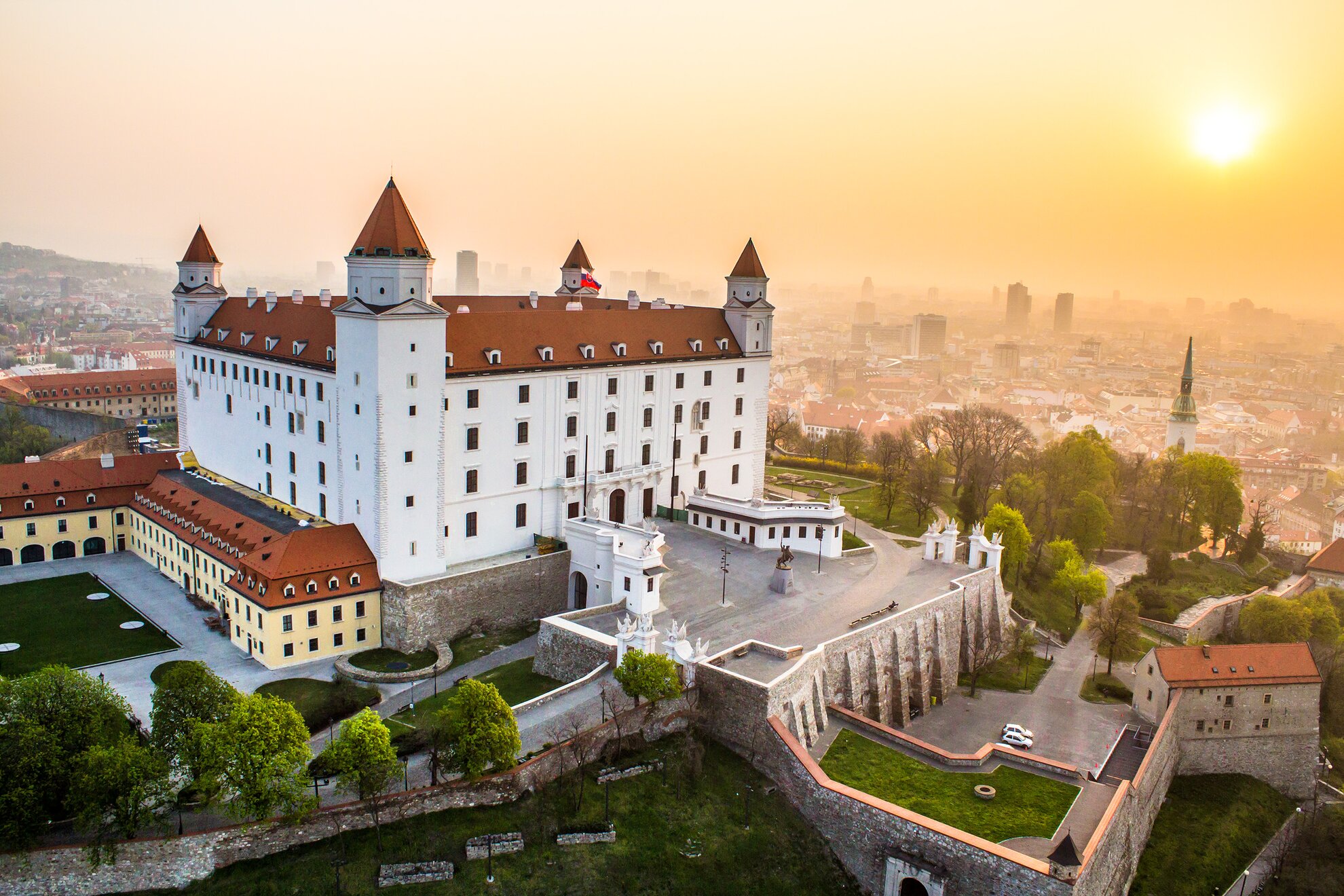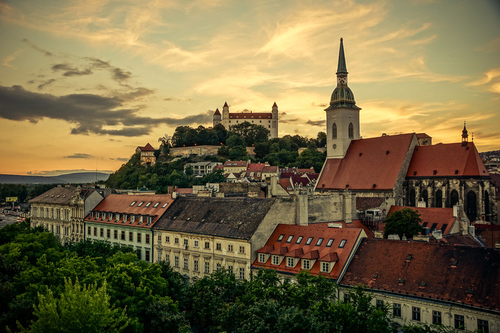In fact, Slovakia used to belong to Hungary until 1920 and 10 % of Slovakia’s population is still Hungarian - no surprise that the effects of this centuries-long symbiosis haven’t disappeared yet.
About SlovakiaSlovakia is a country of wonderful mountain chains: the ranges of the Northern Carpathians run through the whole country, leaving only a few flat areas in the Southern region. Slovakia has some very beautiful natural landmarks, gorgeous lakes and rivers, fantastic mountain peaks in the Tatra and some very spectacular historical towns like Trnava, Nitra, Presov, Banska Bystrica or Kosice but the real sightseeing experience awaits you at the capital, Bratislava (Pozsony in Hungarian).

About BratislavaBratislava is a capital city with less than half a million inhabitants – a perfect example of a historical town becoming a booming major city without losing its unique atmosphere. The history of the city began in the ancient ages and continued with numerous Celtic, Roman and Slavic conquests through the early Middle ages until the Hungarians reached this region. Being part of the Hungarian Kingdom, the town of Pozsony began to flourish and it became one of the most important cities of Hungary by the Middle Ages. With Vienna just a few kilometres away, Pozsony became the capital of Hungary in the 16th-18th century and always remained a prosperous multicultural city. After 1920, Slovakia gained control of Pozsony (the city was renamed to Bratislava) and soon, it became the centre of the new state.CityscapeBratislava’s cityscape is characterized by medieval and baroque architecture, however the 20th century had a great and not always very positive impact on the city, resulting in a very special atmosphere. The oldest buildings (Town Hall, City Museum, medieval forts) of the must-see Old Town were erected in the 14th-15th centuries but the centre is rather characterised by the baroque palaces, such as the Grassalkovich Palace (residence of the Slovak president) or the Archiepiscopal Palace (seat of the Slovak government). Notable churches and cathedrals include the Gothic St. Martin’s Cathedral (it served as the coronation church for Hungary for 300 years), the Franciscan Church, the Church of St. Elisabeth and the underground Jewish Cemetery. Newer buildings worth taking a look at are the New Bridge, the Kamzík Tower, the new business districts and the new building of the Slovak National Theatre.

Getting thereBratislava is just 200 kilometres away from Budapest, you could even call it a short distance if you choose to take the highway. Public transportation to Bratislava is excellent, not only does Hungarian Railways offer return tickets for only 16 Euros for the ride of two and half hours; the buses of OrangeWays also take you to the Slovakian capital at a discount price.




